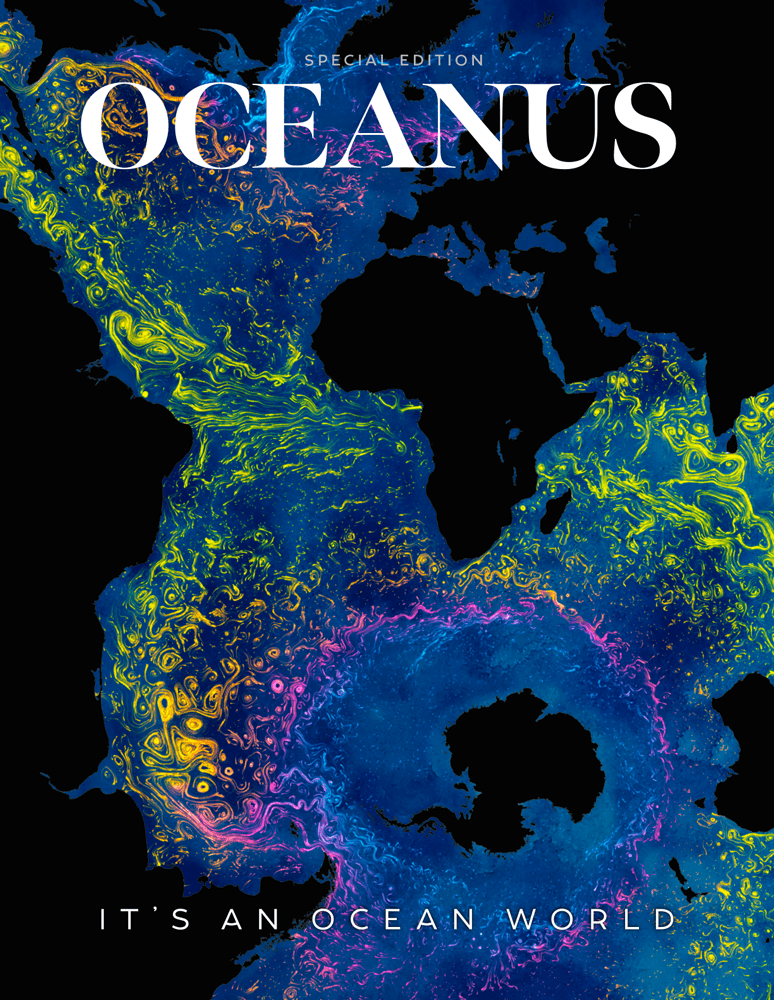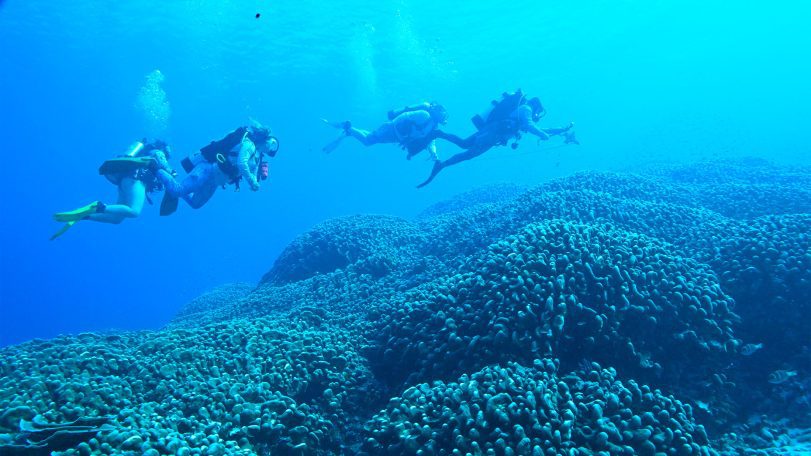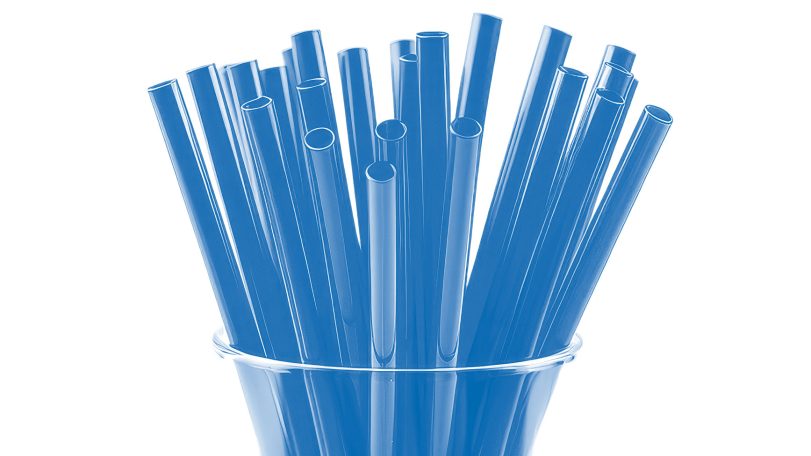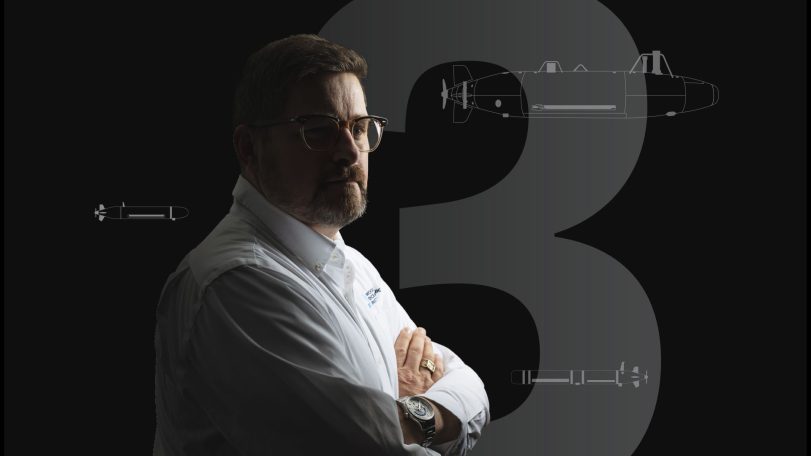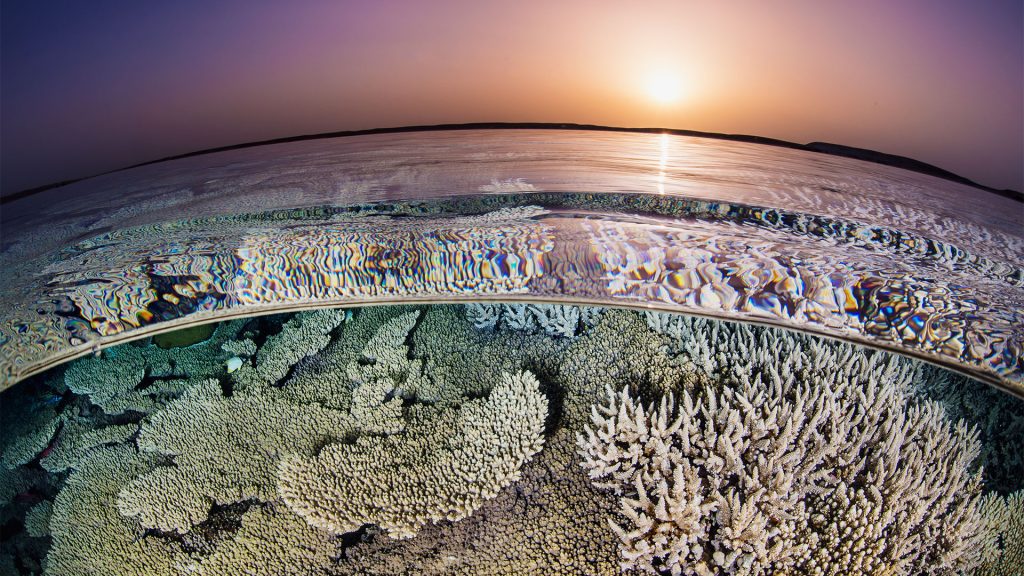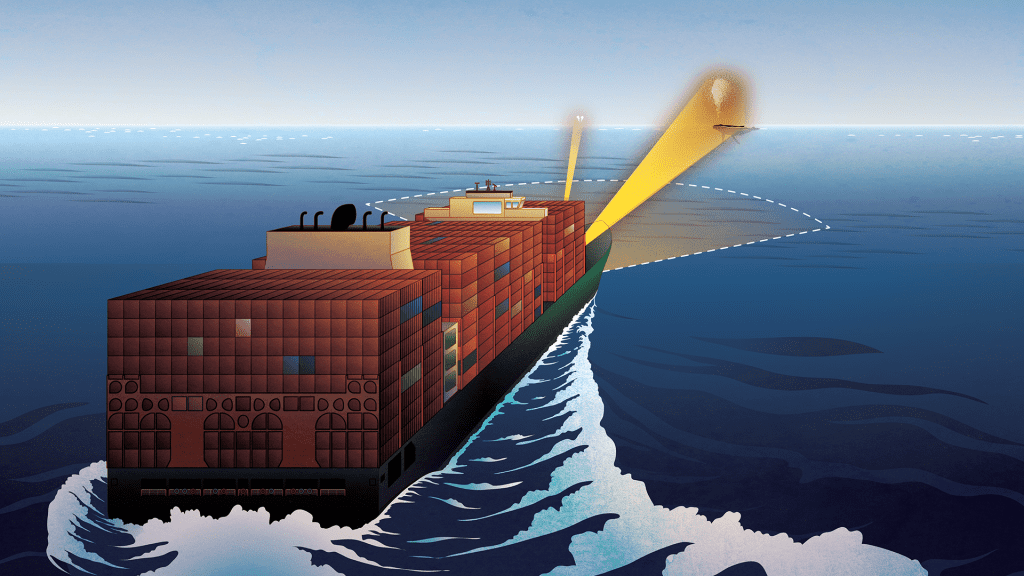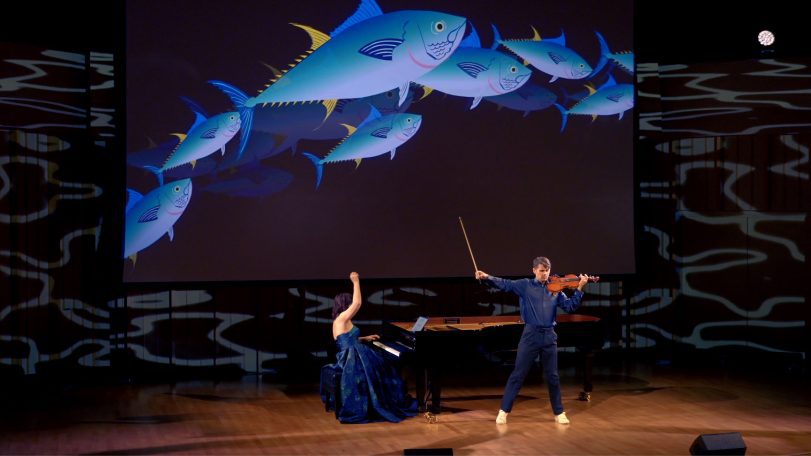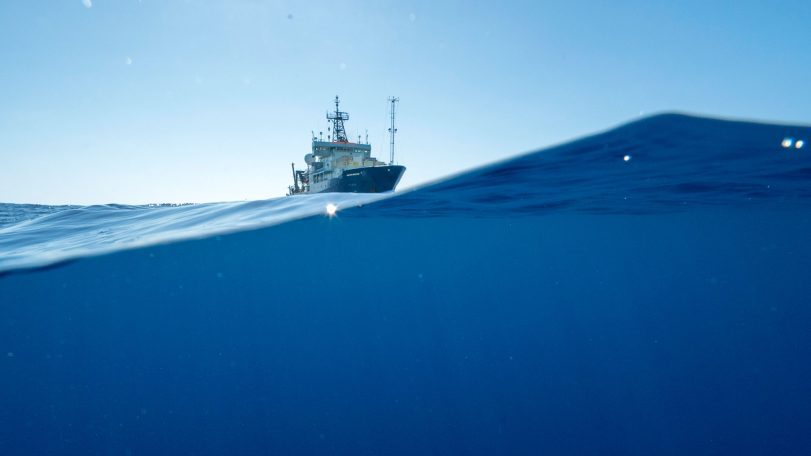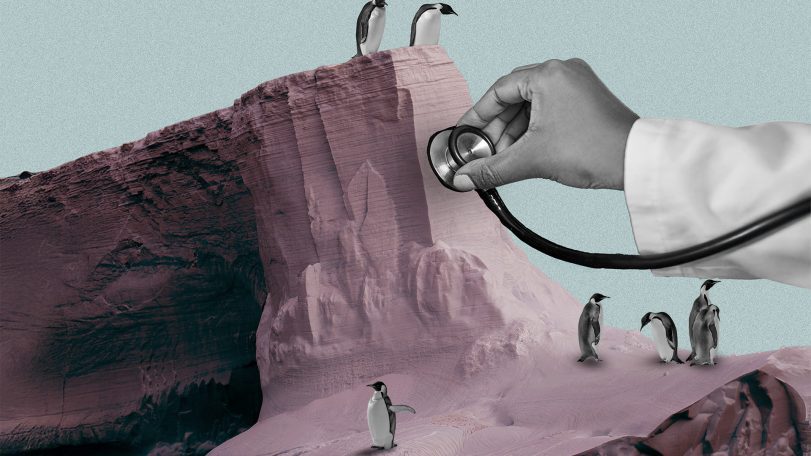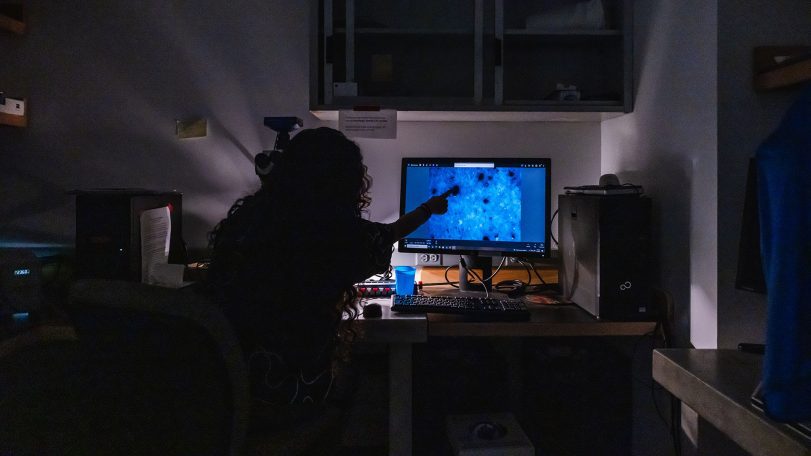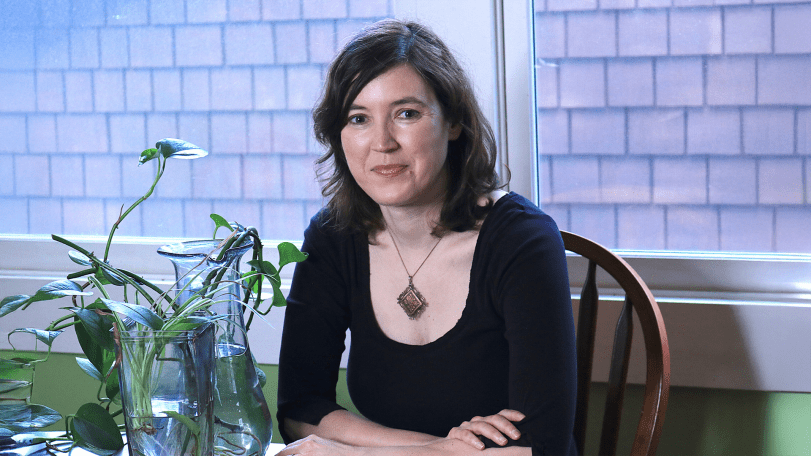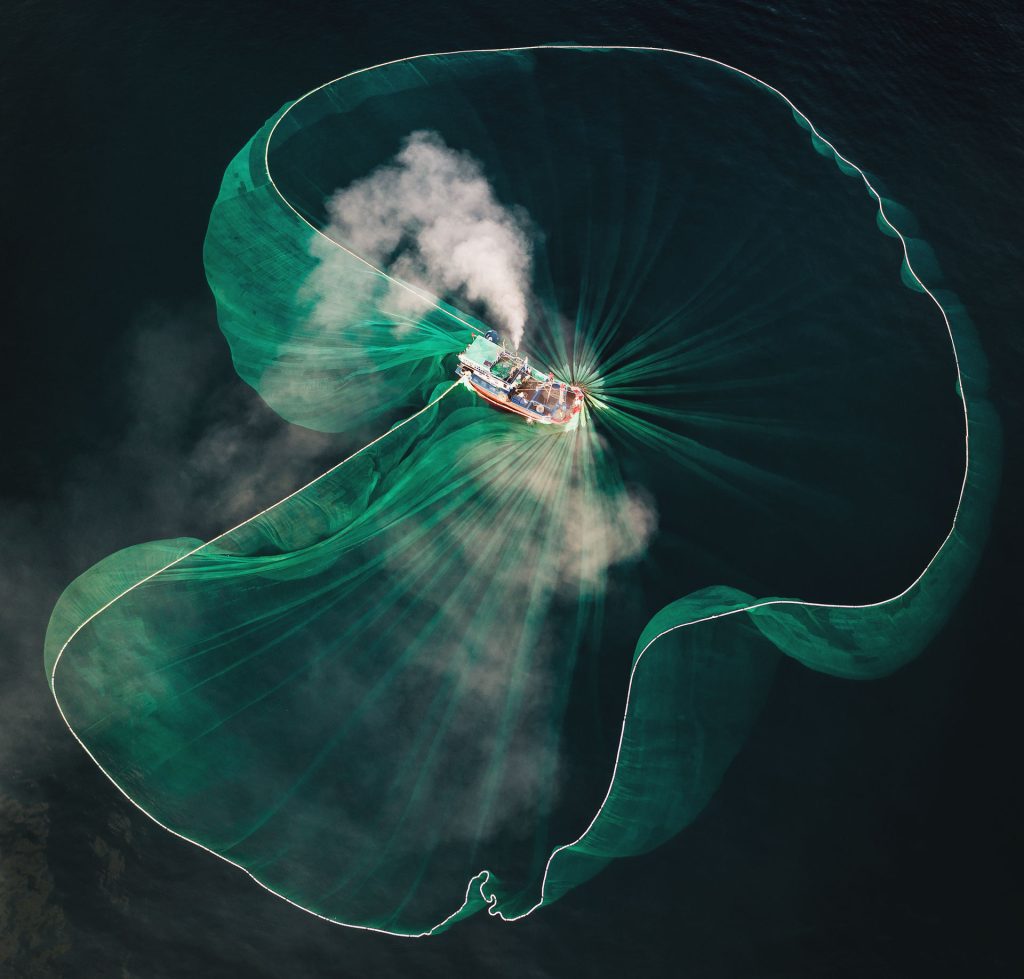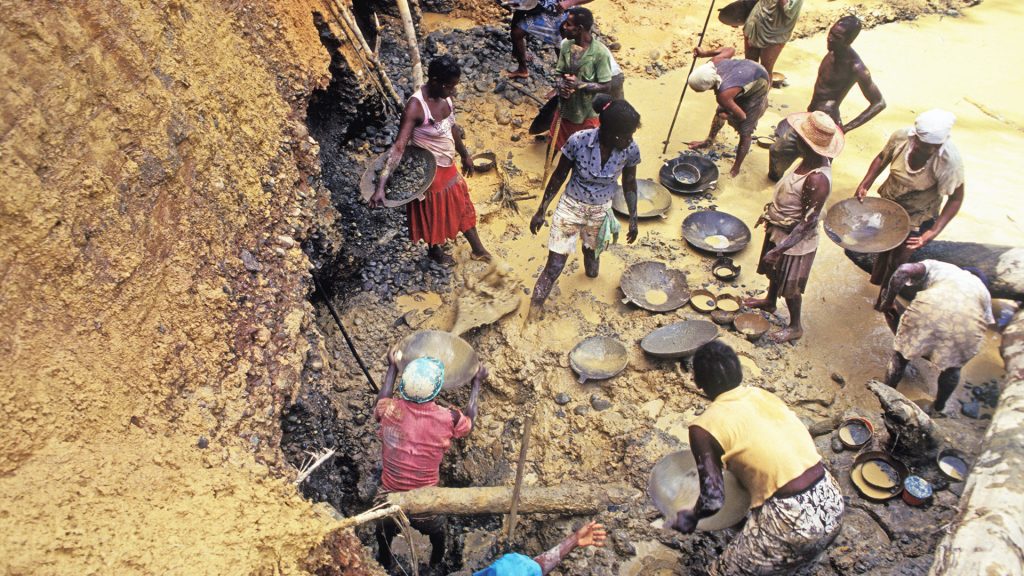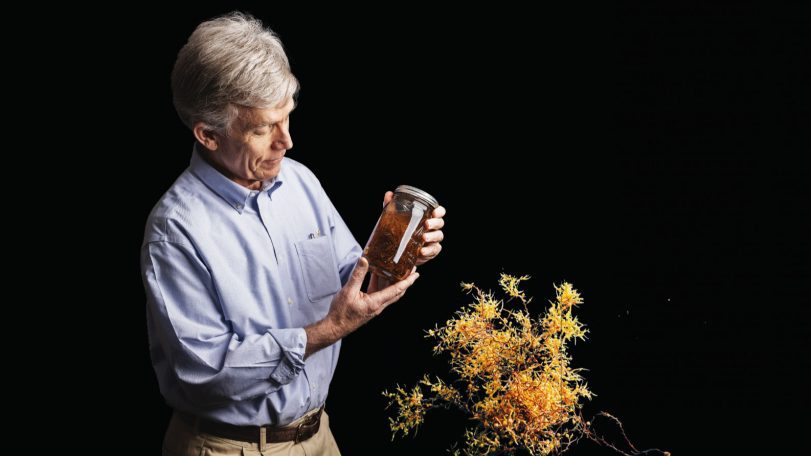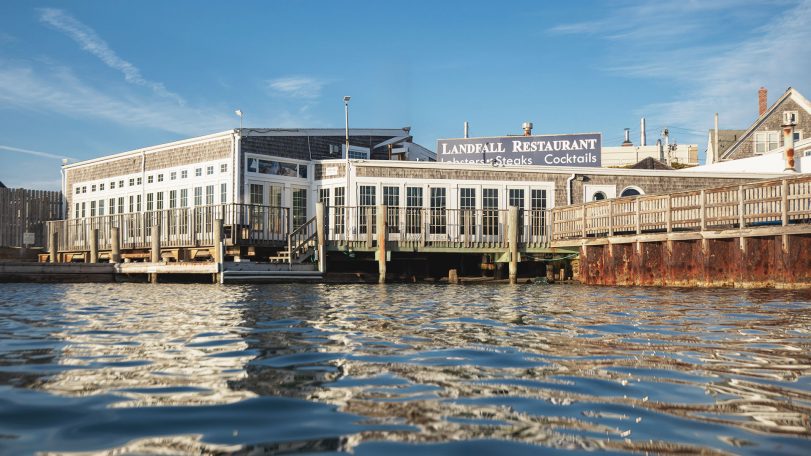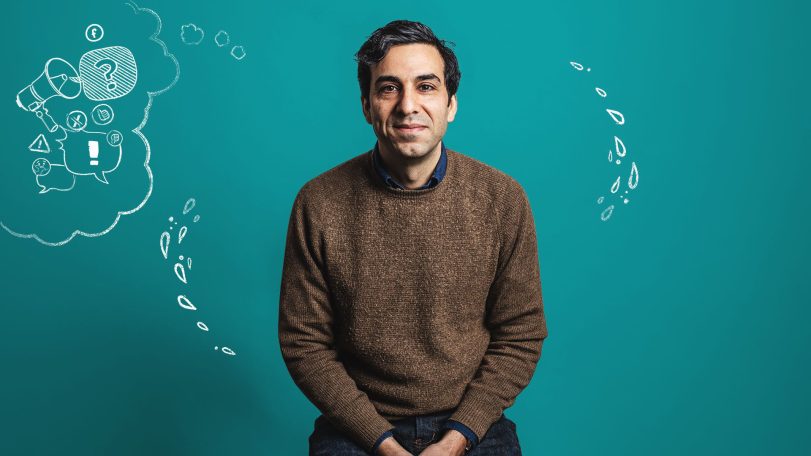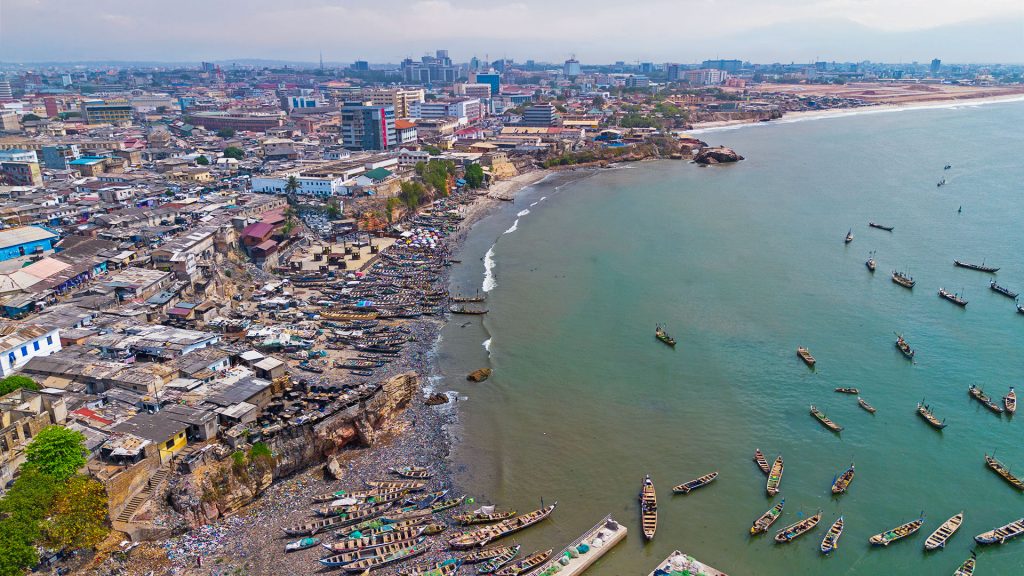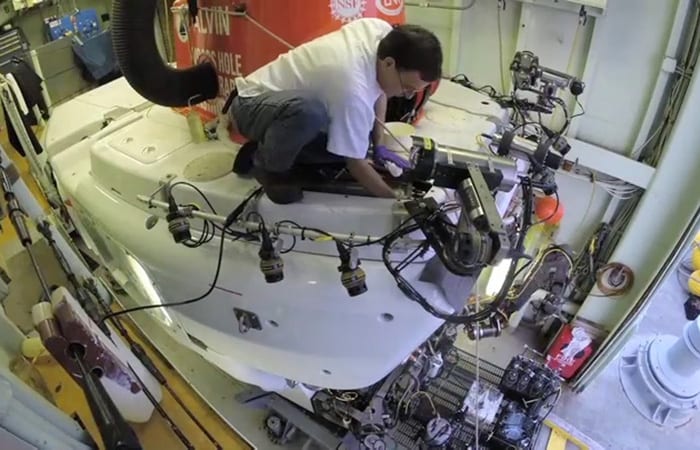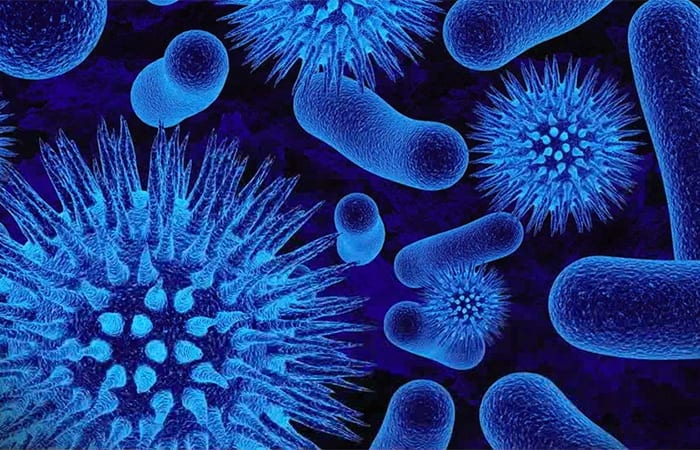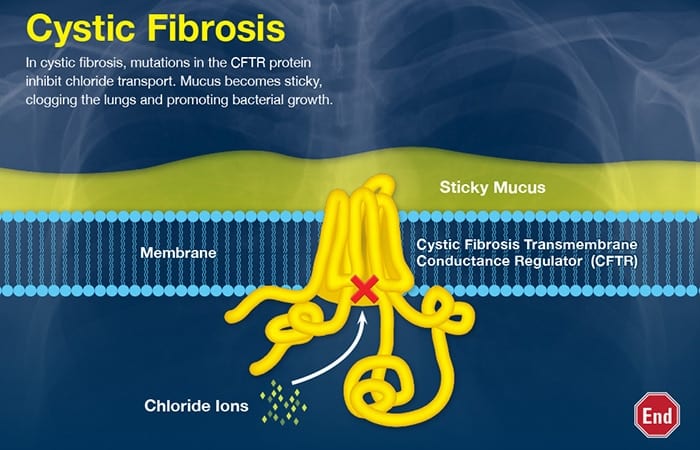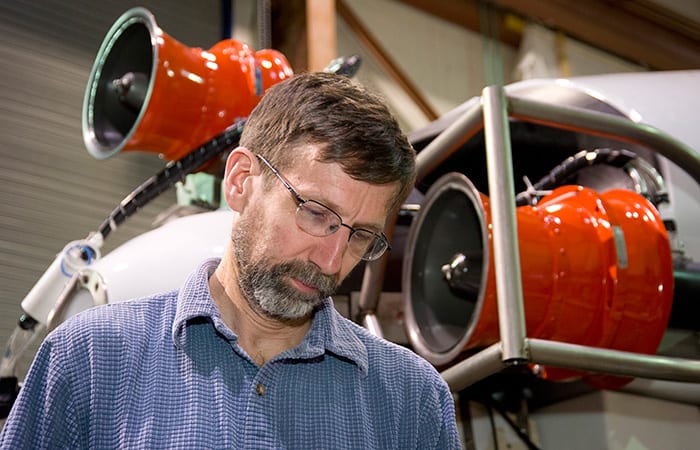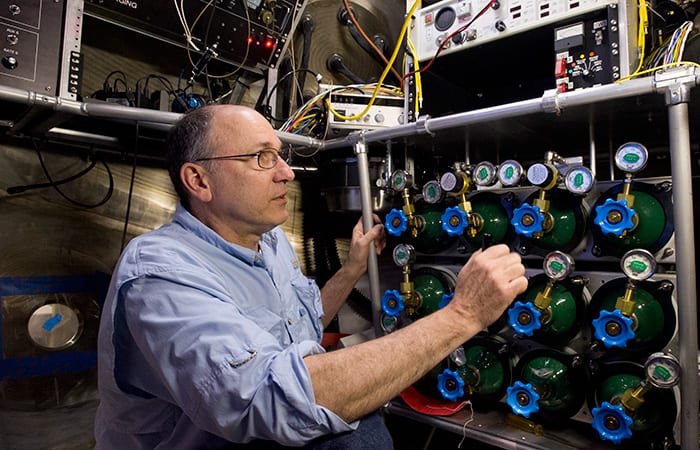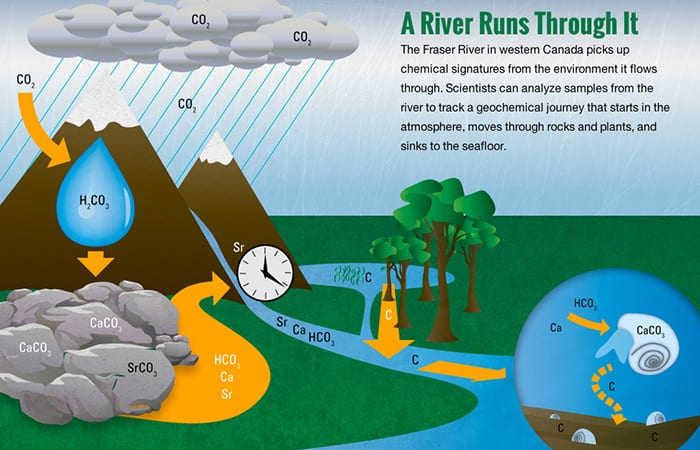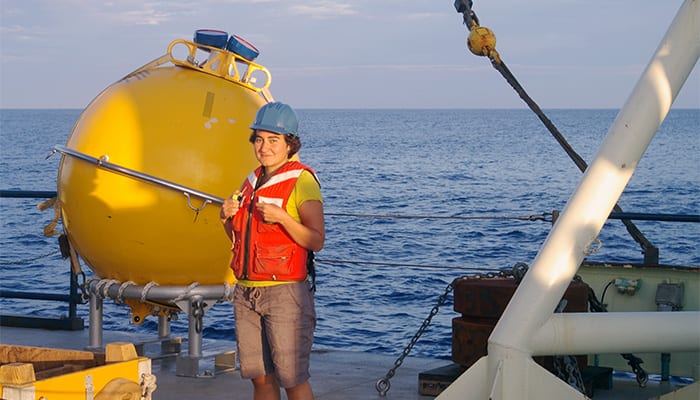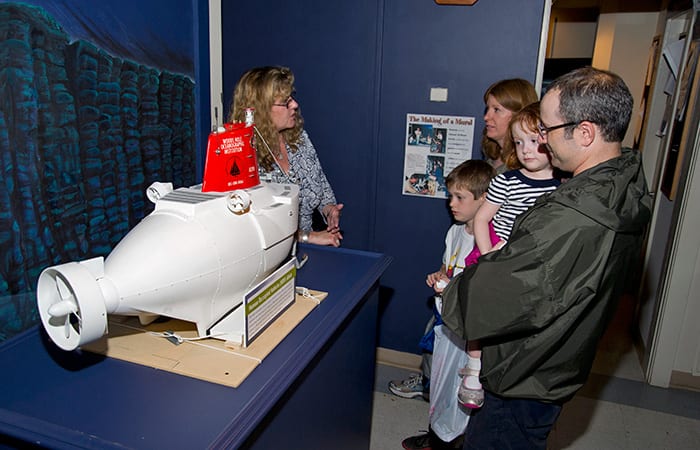
Lessons from a lifetime of exploration
Award-winning ocean photographer Brian Skerry shares insights from a career spent around ocean life and science
How an MIT-WHOI student used Google Earth to uncover a river–coral reef connection
Climate & Weather How an MIT-WHOI student used Google Earth to uncover a…
The little big picture
WHOI senior biologist Heidi Sosik on the critical need for long-term ocean datasets
The ocean weather nexus, explained
The vital role of ocean observations in extreme weather forecasting
Breaking down plastics together
Through a surprising and successful partnership, WHOI and Eastman scientists are reinventing what we throw away
Three questions with Carl Hartsfield
Captain Hartsfield, USN retired, discusses the role ocean science plays in our national defense

and get Oceanus delivered to your door twice a year as well as supporting WHOI's mission to further ocean science.
Our Ocean. Our Planet. Our Future.
The Ocean (Re)Imagined
How expanding our view of the ocean can unlock new possibilities for life
Body snatchers are on the hunt for mud crabs
WHOI biologist Carolyn Tepolt discusses the biological arms race between a parasite and its host
A polar stethoscope
Could the sounds of Antarctica’s ice be a new bellwether for ecosystem health in the South Pole?
Secrets from the blue mud
Microbes survive—and thrive—in caustic fluids venting from the seafloor
Top 5 ocean hitchhikers
As humans traveled and traded across the globe, they became unwitting taxis to marine colonizers
Following the Polar Code
Crew of R/V Neil Armstrong renew their commitment to Arctic science with advanced polar training
Harnessing the ocean to power transportation
WHOI scientists are part of a team working to turn seaweed into biofuel
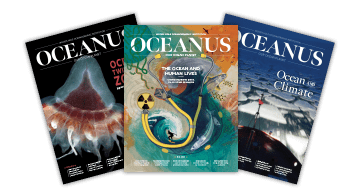
Looking for something specific?
We can help you with that. Check out our extensive conglomeration of ocean information.
Casting a wider net
The future of a time-honored fishing tradition in Vietnam, through the eyes of award-winning photographer Thien Nguyen Noc
Gold mining’s toxic legacy
Mercury pollution in Colombia’s Amazon threatens the Indigenous way of life
How do you solve a problem like Sargassum?
An important yet prolific seaweed with massive blooms worries scientists
Ancient seas, future insights
WHOI scientists study the paleo record to understand how the ocean will look in a warmer climate
Rising tides, resilient spirits
As surrounding seas surge, a coastal village prepares for what lies ahead
Whistle! Chirp! Squeak! What does it mean?
Avatar Alliance Foundation donation helps WHOI researcher decode dolphin communication
We can’t do this alone
For marine chemist Adam Subhas, ocean-climate solutions don’t happen without community
How WHOI helped win World War II
Key innovations that cemented ocean science’s role in national defense
Life at the margins
Scientists investigate the connections between Ghana’s land, air, sea and blue economy through the Ocean Margins Initiative
Ready, Set, Dive
Before scientists go to work in the morning at the bottom of the ocean in the submersible Alvin, a team of engineers, pilots, and ship’s crew performs a carefully orchestrated choreography.
Uncovering the Ocean’s Biological Pump
Dan Ohnemus clearly remembers the highlight of his fourth-grade class in Bourne, Mass. He and…
Drug Discovery in the Ocean
WHOI scientists are investigating a wide range of unexplored microbes that produce chemicals with potential…
Rebuilding Alvin: Jonathan Howland
The 25th installment in our series on the people at Woods Hole Oceanographic Institution who helped design and build the new and improved version of the submersible Alvin.
Rebuilding Alvin: Phil Forte
A new installment in our series on the team of people at Woods Hole Oceanographic Institution who helped design and build the new and improved version of the submersible Alvin.
Of The River and Time
The Fraser River in western Canada is flowing with tiny time capsules. Inside them is…
A River Runs Through It
The geochemical journey of carbon from the atmosphere to the river.
Jet Stream Gets Fish in Hot Water
WHOI scientists traced a heat wave in the North Atlantic, and the disruption of fisheries that it caused, to an unusual pattern in air circulation months earlier.
Detours on the Oceanic Highway
WHOI graduate student Isabela Le Bras is exploring newly discovered complexities of the Deep Western Boundary Current, a major artery in the global ocean circulation system that transports cold water south from the North Atlantic.
A Buoy’s Long Strange Trip
Since 2004, WHOI scientists have deployed ice-tether profilers (ITPs) in polar sea ice to monitor changing conditions in the Arctic. ITP 47 found its way to the coast of Ireland.
Li’l Alvin
Tom Ryder is a professional underwater diver and a radio-controlled model builder. That combination, naturally, led to a fully operational miniature version of the deep-sea sub Alvin.
